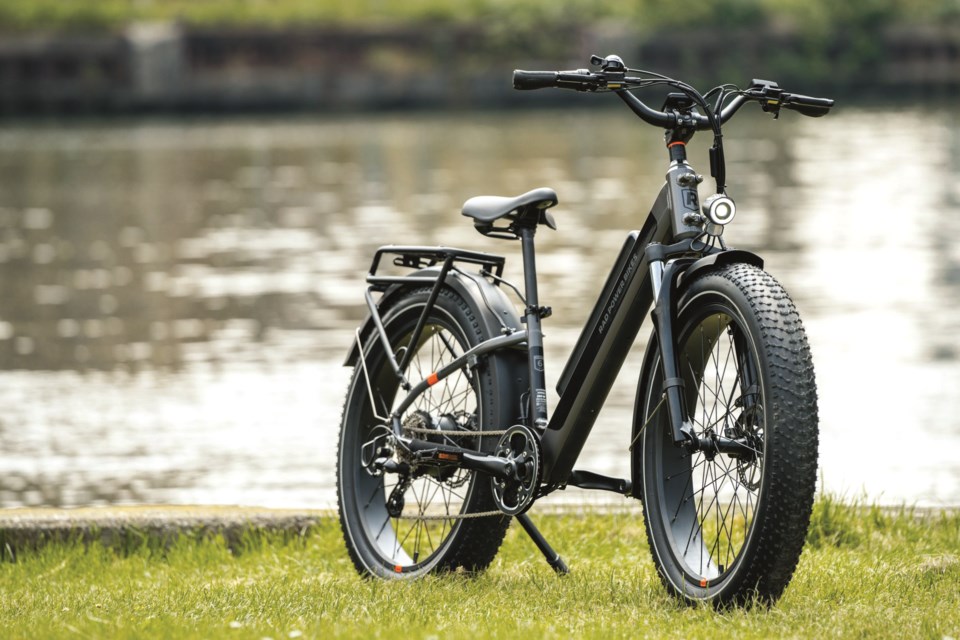It was the summer of 2004 when I first rode an electric-powered, pedal-assisted bike. I was working an office admin job at a small property management company in London, England, trying to save enough money to go travelling in Europe (like all the other Australians). My employer’s office was in Kensington in the central-west part of the city, where traffic and parking was always an issue. While I’d use the tube to quickly get around other parts of the city to show various properties (or flats, as the British call them), for local spots, I’d jump on the boss’ bike. It was an old single-speed, banana-seat cruiser with a rear hub motor that would engage when you pedalled, likely an aftermarket modification. Being a well-to-do London man, my boss wouldn’t want to arrive sweaty or have his pants crinkled by too much pedalling effort. The congestion of London streets was his main reason for owning an e-bike. Environmental awareness was still catching on in his circles.
Electrification is now in its boom period. Everything from cars and trucks to chainsaws and leaf blowers to snowmobiles and zipline trolleys is getting the e-treatment. The most noticeable of these in Whistler, of course, is bikes. In particular, commuter and utility e-bikes.
RadWagons—those cargo e-bikes that can fit a couple of toddlers on the back and a bag of groceries on the front—are out in force this spring. As families and couples try to scale down to one-car households, e-bikes are becoming more affordable and practical. So much so it’s already getting the Kens and Karens chirping about how they’re a menace on the Valley Trail.
I haven’t pulled the trigger on purchasing a utility e-bike yet, but I did help a friend put one together and was able to give the bike a few solid test rides. Here’s a run down of my experience.
My friend was on vacation in Mexico, so she redirected the delivery of her new RadExpand 5 ($1,849) to my house. Not unexpectedly, the delivery was weeks late and had already involved several customer service calls. When it did arrive, the package was about 50-per-cent bulkier than a normal bike box and what felt like about 80-per-cent heavier. The FedEx driver asked for help to get it off the truck and through my front door.
Assembling the bike was pretty easy, with most of it already done at the factory. A small bag of tools and a comprehensive owner’s manual shipped with the bike along with quick references to YouTube assembly videos. The only extra tools I needed were a 15mm pedal wrench, a tube of bike grease and a floor pump, all of which I had on hand. After attaching the handlebars, seat, pedals, lights and fenders, I plugged in all the electrical signal cables and began charging the battery. The whole process took about an hour.
The RadExpand is a folding commuter bike, so with a couple of quick release points it folds down to be conveniently stored or stowed in the back of an SUV. While I didn’t require this feature during my few weeks of using this e-bike, I can see how it would benefit people in condo buildings or RV enthusiasts looking for short-range travel when on the road.
The 500-watt geared hub motor had a surprising amount of kick to it, the power accessed from either pedal-assist or a twist throttle. Given I was mostly doing short errand trips to the post office and grocery store, I wasn’t worried about running out of charge, so I kept it in full-power mode pretty much the whole time. But after almost ramming the bike into my parked truck in the driveway, I realized that full power should really only be used when you’re on open roads, not when parking the bike or dodging strollers and dogs on the Valley Trail. For clarity, I didn’t ride this bike on the Valley Trail, since the (more fun) full-power option seemed a bit fast and unsafe.
I wasn’t able to test the max 125kg (275lb) payload capacity, but I did load the front basket with a couple of hefty grocery bags. The basket mounts directly to the frame (not the fork or handlebars), so the load sits still as you turn corners. With that extra power coming from the rear hub, hauling around heavy loads of cargo didn’t really affect handling too much, partly because the bike itself is quite heavy. Don’t plan on lifting one up stairs around town.
So… would I buy one? Given I live pretty close to the village already and work from home, an e-bike wouldn’t benefit me as much as someone who works in Function Junction and lives at the top of the Alpine Way hill. The RadWagons are awesome for families dropping kids off at school or daycare, since the kids get a kick out of cruising on them with their own handlebars to hold on to.
Rad Power Bikes is of course not the only company making these bikes, they’re just one of the more popular brands in North America. Take a look on a couple of websites and you’ll soon be inundated with paid digital advertising from the many different e-bike brands.
With Specialized launching its cargo e-bike brand Globe and dozens more manufacturers getting in on the electrification boom, it won’t be long before these e-bikes are in every household. If money was no object, I’d pick up a Surly Big Easy ($7,099), a longtail electric cargo bike described as the “18-wheeler of the cargo bike world, minus the diesel fumes.” This bike can tow a trailer to haul furniture—a true car-replacement vehicle.
I’ve read many headlines lately stating the world doesn’t need more electric cars as much as it needs more electric bikes. Whistler should be ready for the transition.
Vince Shuley had a Rad time on the e-bike. For questions, comments or suggestions for The Outsider email [email protected] or Instagram @whis_vince.




